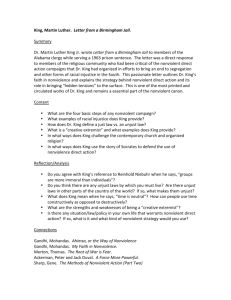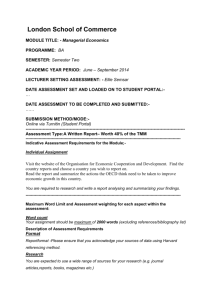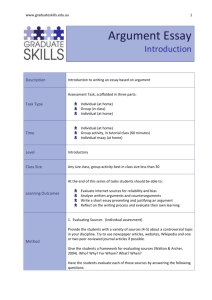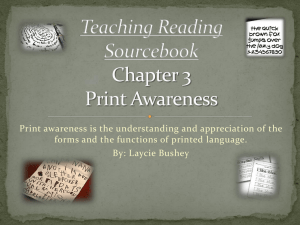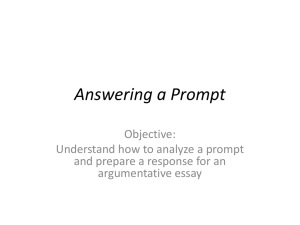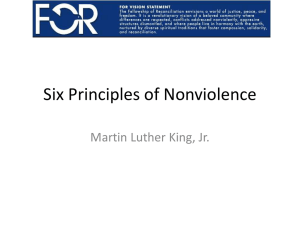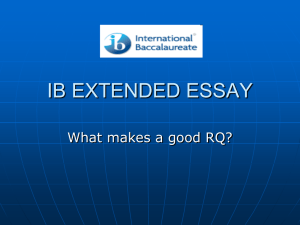The Civil rights movement 1860s-1960s (1)
advertisement
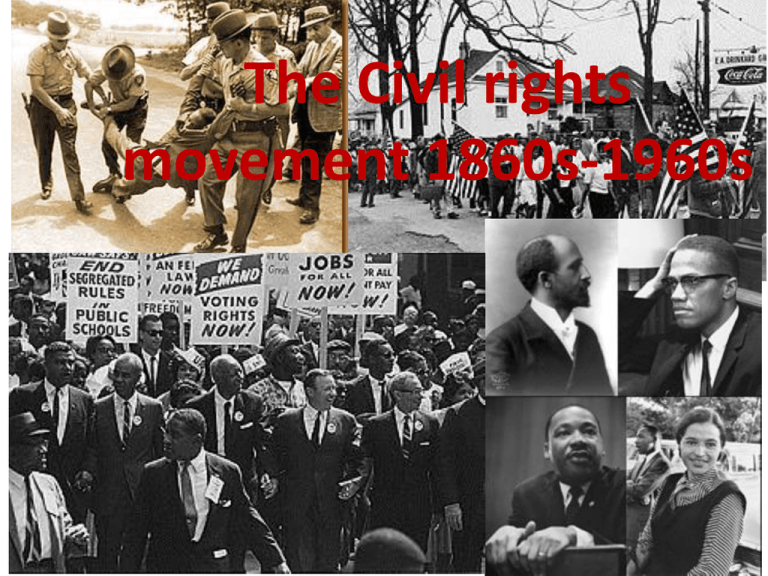
The Civil rights movement 1860s-1960s Sources – historical arguments • ‘‘Analyses of print media coverage of civil rights "events" suggest that court decisions, including Brown, attracted relatively little attention as compared with demonstrations producing confrontation and violence, such as the Montgomery bus boycott of 1955-1956.’’ Michael J. Klarman, Brown, Racial Change, and the Civil Rights Movement, Virginia Law Review, 80.1 (1994), p.78 • ‘‘The US civil rights movement did not, however, rebut scepticism about the effectiveness of non-violent action against dictatorships. Although faced with socially entrenched and violent repression in the South, African Americans appealed to the US constitution, the Supreme Court, and the President.’’ Doug McAdam, The US Civil Rights Movement: Power from Below and Above 1945-70 in Adam Roberts and Timothy Garton Ash (eds), Civil Resistance and Power Politics, Oxford University Press 2009 • ‘‘At the national level, the Southern Christian Leadership Conference served as the "decentralized political arm of the black church" (Morris 1984, 91). The SCLC's mandate was to coordinate nonviolent direct action activities through churches in various locations and its initial leadership was made up of ministers who led many of the largest nonviolent actions in Montgomery, Tallahassee, New Orleans, Atlanta, Baton Rouge, Birmingham, and Nashville.’’ Allison Calhoun-Brown, Upon This Rock: The Black Church, Nonviolence, and the Civil Rights Movement, Political Science and Politics, 33.2 (2000), p.169 • ‘‘The black church was able to mobilize people for nonviolent action because church membership provided individuals a frame for receiving the message and meaning of nonviolence.’’ Allison Calhoun-Brown, Upon This Rock: The Black Church, Nonviolence, and the Civil Rights Movement, Political Science and Politics, 33.2 (2000), p.172 Finding Sources • Books in libraries – school, public, Sheffield Universities – Remember that just because a book is not about your specific subject you may still find useful information to use! • Google Books/Scholar • Purchasing Items – Abebooks, Amazon, etc. • American History Research Wiki http://history.dept.shef.ac.uk/wikiamerica/index.php/Main_Page • Other internet databases – • http://chroniclingamerica.loc.gov/ http://memory.loc.gov/ammem/snhtml/ • http://news.google.co.uk/news/section?cf=all&ned=us&topic=w &ict=ln&edchanged=1&authuser=0 • Be selective when using sources! Don’t use Wikipedia as a reference! Analysing sources • What type of source is it? What can that tell us? • What is it trying to argue/put across? • What are its limitations? • What is the significance of it’s date/place? • Who is it aimed at – audience, viewers etc.? Essay writing pointers • Avoid structuring your essay chronologically, as this can make it overly narrative. • A good way to approach the essay is thematically – e.g. economic changes in civil rights of black Americans, political changes, social changes etc. • Make sure to address the whole 100 year period! You are looking at change and continuity – what changed over the period, what stayed the same? – and cause and consequence – why did the changes occur? What happened as a result? Argument • A clear and concise argument is crucial to achieving a high mark in a history essay, have a clear idea of what yours is before you start writing! • Once you have an argument make sure to sustain it through-out the essay. • What sources and examples do you have to back up your argument? How do you dismiss the counter-argument? An example argument • E.g: to the question ‘In the context of 1861 to 1975 to what extent did war act as a catalyst in advancing black civil rights in America?’ • ‘The Civil War played a large role in advancing black civil rights as it freed blacks from the bondage of slavery. Brogan has identified that during the war black slaves were enlisted by the army as labourers and soldiers… African Americans were formally liberated with the passing of the 13th Amendment to the constitution in December 1865 which stated… Both of these acts clearly show that black civil rights had not only been advanced but established for the first time in the U.S., and that with them came greater…’ • Point • Evidence • Explanation Referencing and bibliography • Why do we need a reference and bibliography? Referencing • There are a number of ways to reference materials you have used, one of these is called the Harvard referencing system. • Referencing can be tricky when you’re not used to it. There are a number of sources online which are useful and worth using. • This website tells you how to use the system: http://libweb.anglia.ac.uk/referencing/harvar d.htm, as do others. Referencing in the text Referencing within the text is the same for all types of secondary sources – books, articles, websites etc. You need to put the name of the author of the source you are using, the date it was published and the page number if needed. You can put the reference after the information or embed it within the text. For example: ‘The black church was able to mobilize people for nonviolent action because church membership provided individuals a frame for receiving the message and meaning of nonviolence.’ (Allison Calhoun-Brown, 2000, p.172). OR Allison Calhoun-Brown (2000, p.172) states that ‘The black church was able to mobilize people for nonviolent action because church membership provided individuals a frame for receiving the message and meaning of nonviolence.’ For some sources the author will not be an individual but an organisation, for example, if you are quoting from the BBC website, you put (BBC, 2012). Bibliography • In the bibliography you need to write a list of all the references you have used in full. The way to do this differs according to type of source, e.g. book or website.
